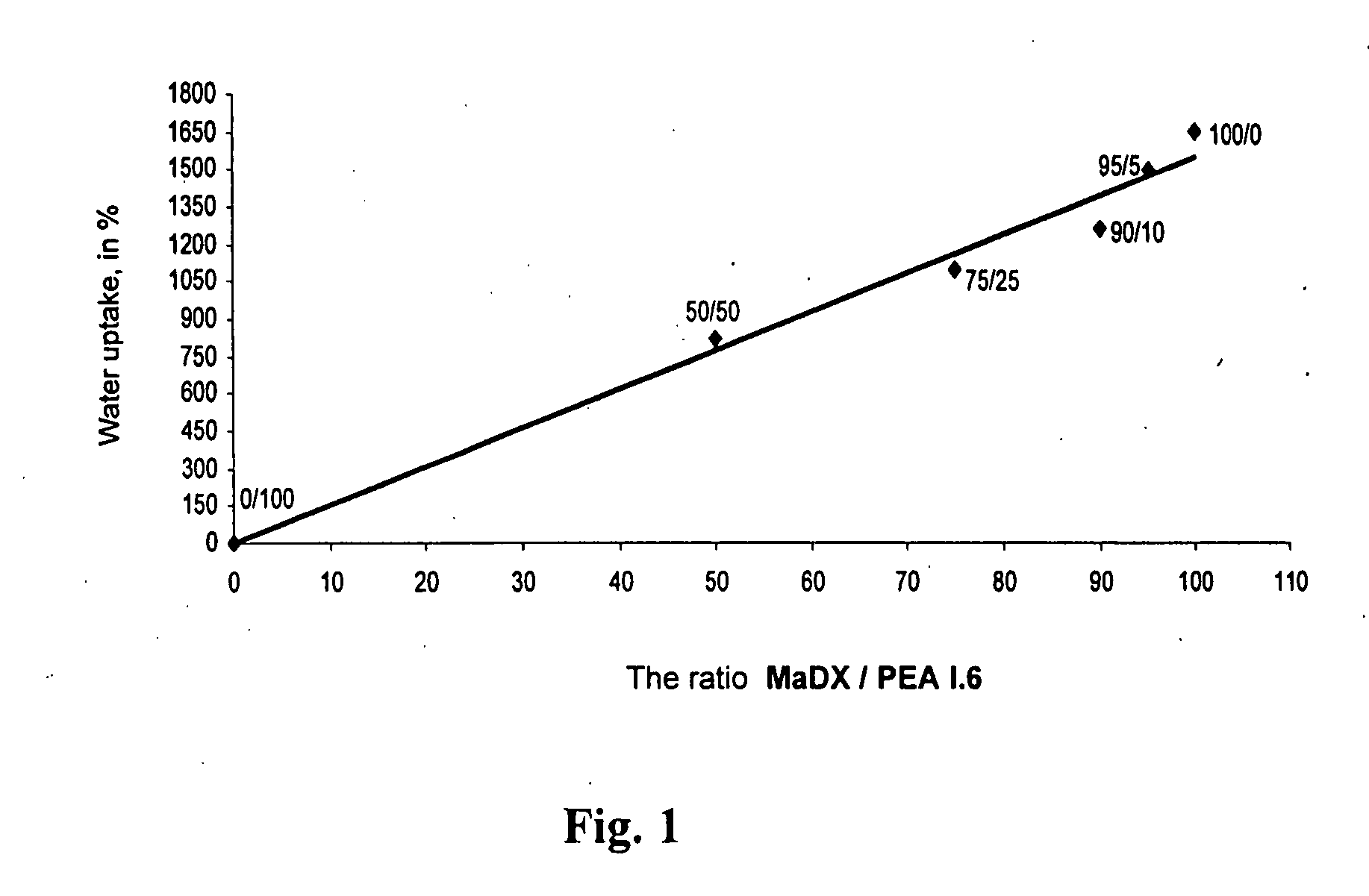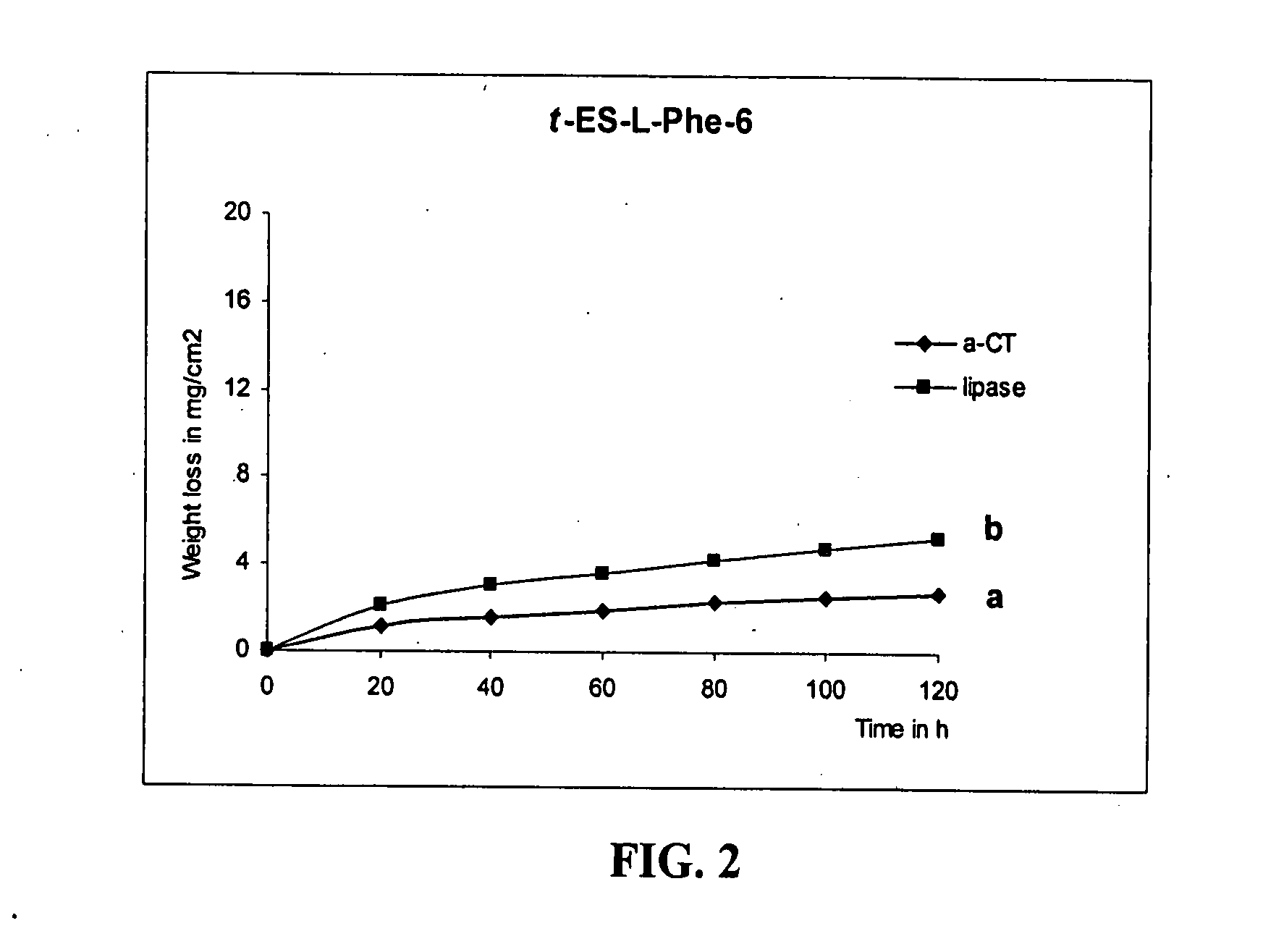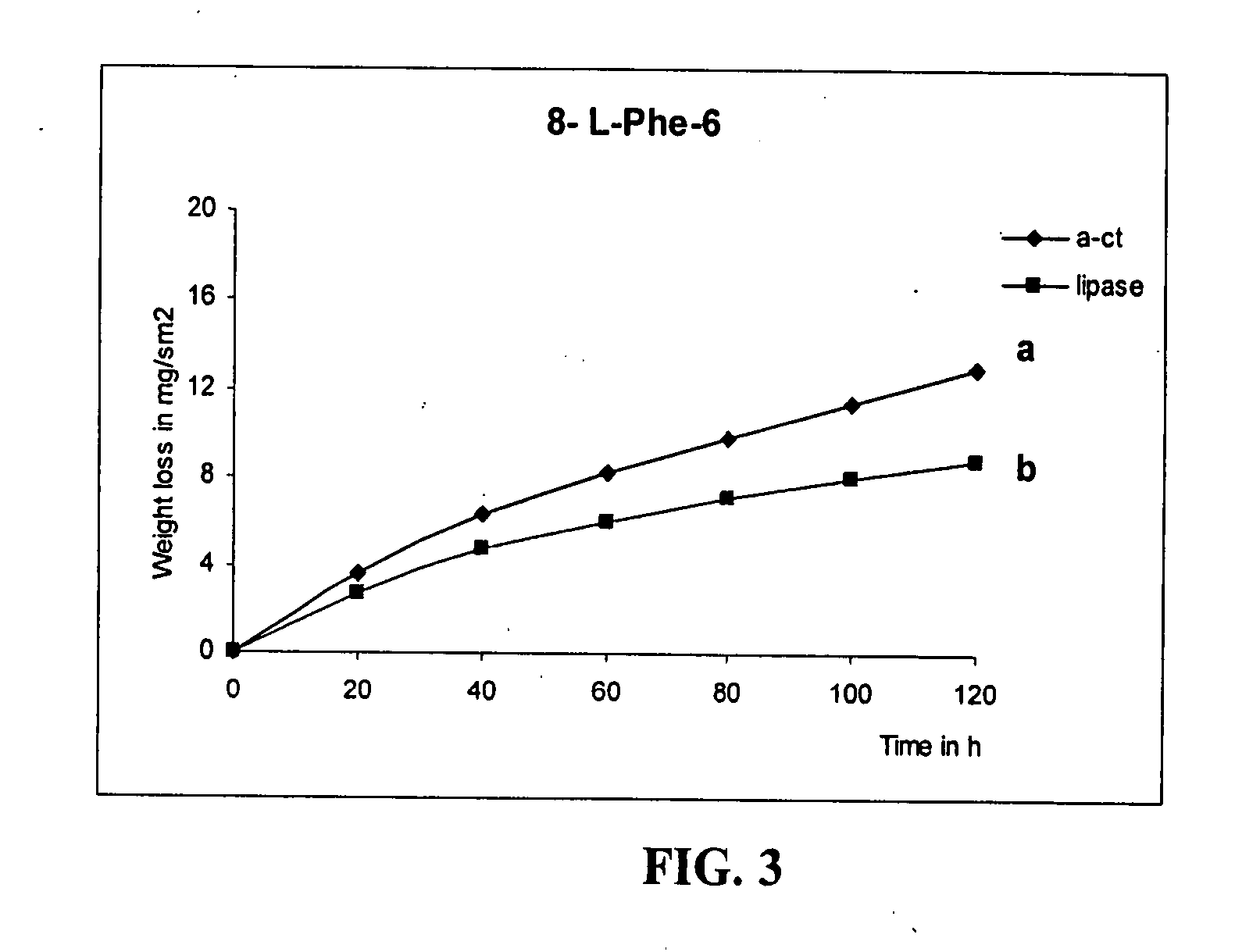Epoxy-containing poly(ester amides) and method of use
- Summary
- Abstract
- Description
- Claims
- Application Information
AI Technical Summary
Benefits of technology
Problems solved by technology
Method used
Image
Examples
example 1
Synthesis of di-p-nitrophenyl-trans-epoxysuccinate Monomer
[0154] Trans-epoxysuccinic acid was synthesized by the treatment of fumaric acid with hydrogen peroxide in the presence of sodium tungstate as catalyst, as previously described (Payne G. B., Williams P. H. J. Org. Chem. (1959) 24:54-55). The acid was collected in 60% yield (scheme 2.A). Elemental analysis: [C4H4O5] calcd. C: 36.38%, H: 3.05%; found C: 36.63%, H: 3.45%. 1H NMR (DMSO-d6 / CDCl3 (1 / 3 v / v), 300 MHz, δppm): 11.55 (s, broad, 2H, —COOH), 3.41 (s, 2H).
[0155] Formed epoxy-di-acid was transformed into the corresponding dichloride, using PCl5 (scheme 2.B). After removing the by-product (POCl3) under reduced pressure, the dichloride crystallized at room temperature. Recrystallization from light petroleum yielded the dichloride in ca. 80% yield (per epoxy-di-acid); m.p. 51-53° C. lit. m.p. 50-52° C. (Campbell T. W and McDonald R. N. J. Polymer. Sci., A (1963) 1:2525-2535). The FTIR spectrum (Nujol) showed strong carbony...
example 2
Solution Active Polycondensation (APC)
[0162] Epoxy PEA synthesis on the basis of di-p-nitrophenyl-trans-epoxy succinate (Table 1.1) Polycondensation of the new active diester V.4 with di-p-toluenesulfonic acid salts, for example, bis-(L-phenylalanine)-1,6-hexylene diester and / or bis-(L-leucine)-1,6-hexylene diester was carried out in N,N-dimethylacetamide (DMA) in the presence of triethylamine as a p-toluenesulfonic acid acceptor. The reaction with V.4 was carried out at room temperature. Significant exothermal effect was observed, which was assigned to increased reactivity of diester V.4, since it is known that hetero-atoms in α-position sharply increase (e.g. by about 3 orders of magnitude in the case of methyl esters) the reactivity of esters of dicarboxylic acids (R. D. Katsarava. (1991) Uspekhi Khimii (Russian Chem. Rev), 60:1419).
[0163] Synthesis on the basis of di-p-nitrophenyl-cis-epoxy succinate (Table 1.1) Epoxy-PEA synthesis based on a cis-isomer was carried out simila...
example 3
Transformations of Epoxy PEAs
Interaction with Amines: a Model Study. Interaction with Primary Amines.
[0169] To study the interaction of epoxy-PEAs with primary amines, monoamine-N-(6-aminohexyl)-2,4-dinitroanilin (Compound 6), containing a “reporting group” was prepared; reporting group 2,4-dinitroanilin chromophore group absorbs strongly at about 360-400 nm and can be readily monitored by photometry.
Compound 6 was synthesized by interacting hexamethylene diamine (1.0 mole) with 2,4-dinitrofluoro benzene (1.0 mole) in DMF in the presence of triethylamine as an acceptor of HF.
[0170] Epoxy-PEA, t-ES-L-Leu-6 (I.1) was selected for this study because of the absence of absorbance in UV and VIS regions of the spectrum. The assumed scheme of the reaction is shown below, in Scheme 7:
[0171] The polymer solution in a DMF / DMSO mixture was heated to 100° C. The mole ratio of epoxy-groups to primary amino groups was 1:2. Under these conditions the reaction proceeded homogeneously; howe...
PUM
| Property | Measurement | Unit |
|---|---|---|
| Temperature | aaaaa | aaaaa |
| Temperature | aaaaa | aaaaa |
| Temperature | aaaaa | aaaaa |
Abstract
Description
Claims
Application Information
 Login to View More
Login to View More - Generate Ideas
- Intellectual Property
- Life Sciences
- Materials
- Tech Scout
- Unparalleled Data Quality
- Higher Quality Content
- 60% Fewer Hallucinations
Browse by: Latest US Patents, China's latest patents, Technical Efficacy Thesaurus, Application Domain, Technology Topic, Popular Technical Reports.
© 2025 PatSnap. All rights reserved.Legal|Privacy policy|Modern Slavery Act Transparency Statement|Sitemap|About US| Contact US: help@patsnap.com



